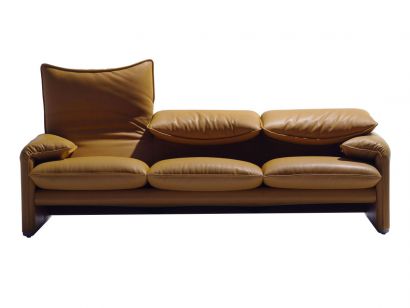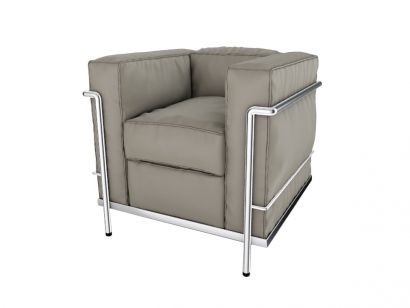

8 design icons to focus on now
What makes a piece of furniture iconic? The answer is not unique, but there is an infallible test and it is that of time: if the furniture continues to show relevance, adequacy and interest over the years, then it can be considered iconic. The meaning of this reflection is to identify those furnishings that, despite having been designed in the distant past, continue to amaze, to integrate with ease into our domestic interiors and to acquire value. Because every piece of furniture is also an investment and its ability to avoid obsolescence or decadence is therefore appreciable. In addition, the icons of the past always tell a story, they give us a journey through time and a lesson in taste. Here are 8 examples of furniture rich in character and personality, timeless, in which to invest without delay.
1928:
by Le Corbusier, Pierre Jeanneret, Charlotte Perriand for

Looking at these furnishings, it is almost hard to believe that they were designed almost a hundred years ago. The aesthetic actuality is in fact unsettling and it does not surprise us that this project was presented in 1929 at the Salon d'Automne in Paris as an example of modern furniture, a new concept of furniture redesigned in the light of the industrial production process and therefore with a clear separation between metal structure and fabric upholstered elements.
1940:
by
for

Absolute forerunner of the "industrial" trend that has spread in recent years, the Leonardo work table is an excellent example of technical furniture transferred to a domestic context. While highlighting the structural elements, the trestles, the table has become so prestigious that it can easily enter even formal contexts.
1957: Tulip table by
for

Saarinen's goal in designing this furniture was to "bring order to the confused world" beneath the table. He succeeds with an intervention of sophisticated simplicity, creating a foot that recalls the stem of a glass and the top which in the elliptical version gives style and order to the context.
1958: PH5 by
for

We are in the 1950s, the Scandinavian style makes school with its functional aesthetic and Poul Henningsen designs this lamp not only thinking about its shape but also the function, precious for him, of improving the quality of the light emitted by the bulbs at the time, incandescent only. To do this, he inserts small red and blue screens that offset the color of the bulb. Today this gimmick is no longer necessary, but the beauty of a lamp designed to improve the life of those who use it remains.
1960:
chair by
for

The design of this chair goes hand in hand with the needs of industrial production for which the designer established a fruitful dialogue with the company. It is, in fact, the first plastic seat composed of a single element. Award-winning, it is an icon with a strong personality.
1969:
by
for
(on the cover)
The father of this series of armchairs is Gaetano Pesce, who has given life to many of the innovative icons of Italian design. Up, whose 50th anniversary was celebrated in 2019, evokes organic, primitive and enveloping forms, translated in a modern key.
1971:
by Giorgio Ceretti, Pietro Derossi, Riccardo Rosso for

Difficult to classify with classic furnishing codes, Pratone is literally a large domestic lawn, on which to lie down and almost disappear. Closer to a sculpture than to a piece of furniture, Pratone tells the era in which it was born, with its avant-gardes and experiments.
1973:
by
for

The same spirit, ironic and experimental, can be found, declined in a more functional way, in the Maralunga sofa. The project introduces for the first time the possibility of adjusting the height of the headrest thanks to the insertion of a bicycle chain in the padding.
Subscribe to our newsletter to get the latest trends in design and our experts' tips about furnishing and to not miss our exclusive and reserved promotions! Do you need help? Our design service is at your disposal to help you decorate your home with a unique style: your own. Contact us sending an email to [email protected] or calling +39.090.6258945.



By creating an account with our store, you will be able to move through the checkout process faster, view and track your orders in your account and more.
Login with
or else
Be inspired by the best international design.
By creating an account with our store, you will be able to move through the checkout process faster, view and track your orders in your account and more!
Subscribe to our newsletter and you will receive a 10% discount coupon to use on your first order. You will also be informed about design novelties, promotions and the most interesting news about the design world. A lot of surprises, special discounts and bonus are expecting you!